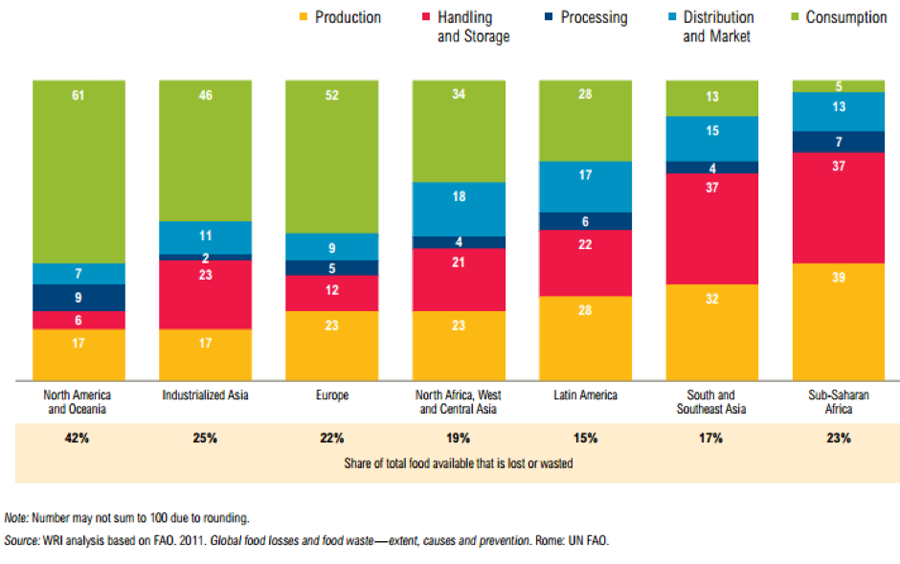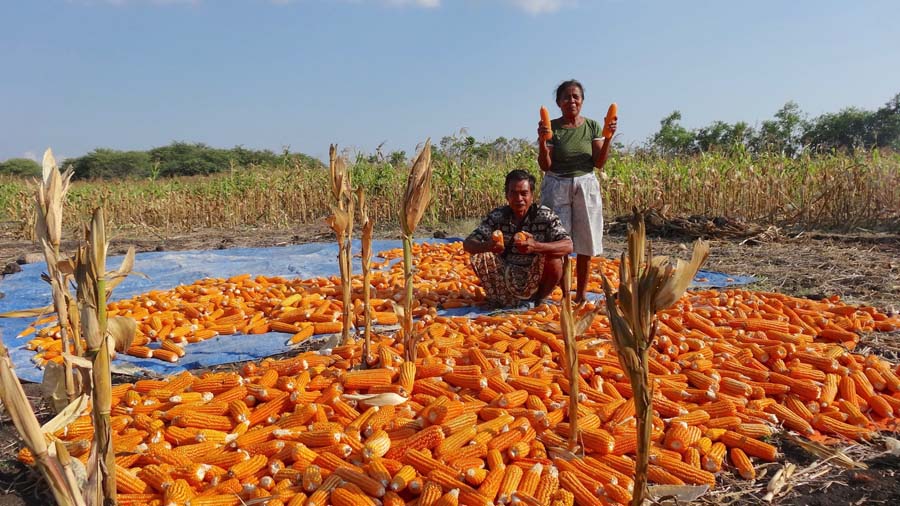Waste not, want not: key messages from the Crawford Fund Annual Conference
Skye Gabb and David McGill
This week we attended the Crawford Fund Annual Conference “Waste not, want not: the circular economy to food security”, where industry and research leaders examined food loss and waste along the supply chain.
Given the importance of this issue (1/3 of food is lost or wasted every year!), we thought we’d share some of our key take home messages from the conference.
- The most food waste and loss is “near the fork” in developed regions and “near the farm” in developing regions
Dr Karen Brooks, Dr Brian Lipinksi

Food lost or wasted by region and stage in value chain, 2009 (Percent of kcal lost and wasted). Source: World Resources Institute analysis based on FAO. 2011. Global food losses and food waste – extent, causes and prevention. Rome: UN FAO.
- Reducing food waste and loss can decrease food prices, this benefits the consumer but may decrease farmer income.
Dr Karen Brooks
- Interventions that can reduce food loss and waste include: sale or donation of unmarketable crops, improved policies and infrastructure, better market access, effective agricultural extension, improved harvesting and on-farm storage and better cold chains.
Professor Louise Fresco, Dr Brian Lipinksi, Ms Madeline Healey, Mr Simon Costa, Mr Salesh Kumar, Professor Alice Woodhead
- A circular food economy allows resources to be recycled through the system. For example, biogas from fermented wastes can provide cooking gas and lighting for poor households, while capturing phosphorus from human excreta can provide fertiliser for crops.
Mr Steve Lapidge, Dr Dana Cordell, Dr Bernadette McCabe
- Clusters of volunteers who are linked to trained experts (e-mentors) can contribute to building capacity for farmers and extension, contributing to reduced food loss and waste.
Ms Madeline Healey
- “Pull” mechanisms can provide incentives for private industry to invest where there’s market failure in addressing food loss and waste.
Dr Rodrigo Ortiz
- Using consistent terms in measuring and describing food loss and waste is important. The “Food loss and waste protocol” has been developed to standardise quantification of food and inedible parts removed from the food chain.
Dr Brian Lipinksi
- Digital technology can link farmers, extension officers and researchers and help both reduce and measure food loss and waste. For example, the Plantwise program is using digital technology to help farmers to manage crop health.
Dr Washington Otieno
- Decreasing food loss and waste is only part of the solution, increasing food safety and improving food access through safety nets and feeding programs is also essential.
Dr Karen Brooks, Professor Louise Fresco
Read the biographies and abstracts of these and other speakers at the Crawford Fund Annual Conference here and the presentations here

Minimising losses ‘near the farm’ is essential; in parts of the world nearly 40% of loss occurs at the ‘production’ stage on farm and a further 37% in the handling and storage of produce.


